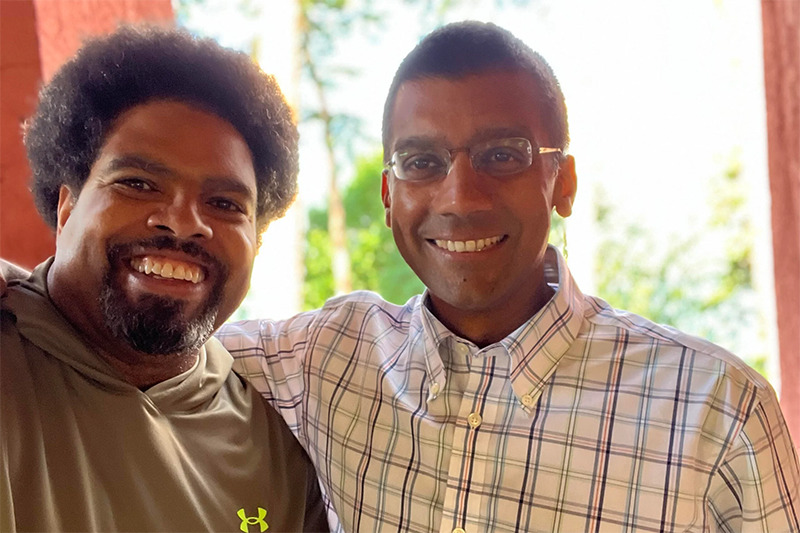
Time to end secret data laboratories—starting with the CDC
The American people are waking up to the fact that too many public health leaders have not always been straight with them. Despite housing treasure…
Thought Leader: Marty Makary
During Reuters’ Total Health conference in Chicago, four healthcare leaders shared the strategies they believe will help fortify the workforce for the future.

Healthcare’s workforce crisis continues to be one of the main challenges keeping leaders up at night. Provider organizations across the country are exploring new ways to attract, retain and support staff members, from offering flexible career paths to tackling systemic frustrations.
During a panel this Tuesday at Reuters’ Total Health conference in Chicago, four healthcare leaders discussed the strategies they believe could help fortify the workforce in the long term.
Shawn Martin, CEO of the American Academy of Family Physicians (AAFP), said that his organization recruits medical students into family medicine by encouraging them to envision themselves in the field — without prescribing what their career should look like.
“If you want to answer the call to serve, you can make your career whatever you want. We’re going to create ways to make that possible for you and let you pursue your service in a way that is unique and meaningful to you,” he declared.
Martin argued that the current medical education system can sometimes strip away physicians’ individuality and sense of purpose. He said that providers have to give their staff the freedom to pursue personalized career paths in order to attract more people to the field and improve retention.
Sanford Health has invested heavily in developing its own physician workforce through new residency and fellowship programs, said Jeremy Cauwels, chief medical officer at the health system, which operates 56 hospitals and 288 clinics in several states across the Upper Midwest.
Two-thirds of Sanford’s patients live in rural areas, and workforce shortages are especially acute in these communities, Cauwels noted.
To prioritize homegrown physicians, the health system launched 15 residency programs in under 10 years, resulting in more than 350 residents and fellows now working within the health system, he explained.
Cauwels pointed out that Sanford’s neurology program in Sioux Falls, South Dakota had just six faculty members a few years ago, and now it has 19. By adding more physicians, Sanford can then expand its care capabilities, he added.
“What this has resulted in for us is the first hospital in the Dakotas that has both a comprehensive stroke center and a Level I trauma center under the same roof, an epilepsy monitoring unit we didn’t have before, and the ability to do things like put deep brain stimulators and those sorts of things for Parkinson’s and other diseases that we weren’t able to deliver to the Upper Midwest previous to this,” Cauwels remarked.
He said that investing in training locally attracts people who are engaged and want to be part of building a positive workplace culture.
Most of the discussions about healthcare staff retention center on physicians and nurses, but providers also face serious retention challenges among medical assistants and other entry-level positions, noted Pete November, CEO of New Orleans-based Ochsner Health.
In his eyes, the key to better retention rates among all healthcare workers lies within the organizational culture. He said that health systems need to build trust among their frontline workers and show them respect, rather than just directives, in order to make their work feel meaningful.
He also encouraged health systems to continue to develop their current staff through internal education pathways. For instance, a health system can have programs helping medical assistants become nurses or licensed practical nurses.
“That’s a great way to retain people and build talent,” November declared. “I’ll tell you, there’s also nothing more special than to go talk to someone who was an MA and felt like they didn’t have a future, and then hear them talk about becoming an RN, and then hear them say, ‘I just applied to medical school.’ That’s purpose and mission.”
Ochsner is also investing in building its talent pipeline through educational partnerships. The health system is establishing a new medical school in partnership with Xavier University, which will be the fifth historically Black medical school in the country, and it offers training programs with Louisiana State University, Tulane University and the University of Queensland.
Clinical burnout is often mischaracterized as a personal issue, according to Dr. Dave Chokshi, a primary care doctor at NYC Health + Hospitals’ Bellevue Hospital, as well as chair of the Common Health Coalition.
“One of my frustrations with the conversation about burnout is that it too often seems to revolve around this idea that we need to fix people and the challenges that our staff are having, instead of the first reflex being to fix the systems that cause that frustration and burnout in the first place,” Dr. Chokshi stated.
He cited Hawaii Pacific Health’s “Getting Rid of Stupid Stuff” program as an example of a project that aimed to do just that.
The health system launched the program in 2017 to eliminate unnecessary and/or annoying tasks, particularly within the EHR. It did so by putting together a simple digital interface that allowed frontline staff to submit examples of workflows they would like to see improved
“The best example was that some of the NICU nurses pointed out that the EHR prompt for patients who were incontinent was built so that they had to make three clicks to indicate that a newborn was incontinent of urine and stool and therefore needed a diaper — when, of course, this is a very expected phenomenon for a newborn to have,” Dr. Chokshi explained.
After this was brought to light, the health system was able to reduce that workflow from three clicks to zero.
A simple change like this illustrates how small fixes can significantly reduce staff’s frustration and burnout, Dr. Chokshi said.
Time to end secret data laboratories—starting with the CDC
The American people are waking up to the fact that too many public health leaders have not always been straight with them. Despite housing treasure…
Thought Leader: Marty Makary
Sanjay Gupta: Can Safety and Excitement Coexist in the NFL
This is the episode of Chasing Life with Dr. Sanjay Gupta. ‘One of the most dangerous plays in football, the kickoff, is getting a makeover…
Thought Leader: Sanjay Gupta
A Meeting of the Minds at Bellagio Spurs a Convening and a Movement
A Bellagio residency leads to a Bellagio convening and a project to alter the U.S. economic system in favor of better health Two Bellagio Center…
Thought Leader: Dave Chokshi

